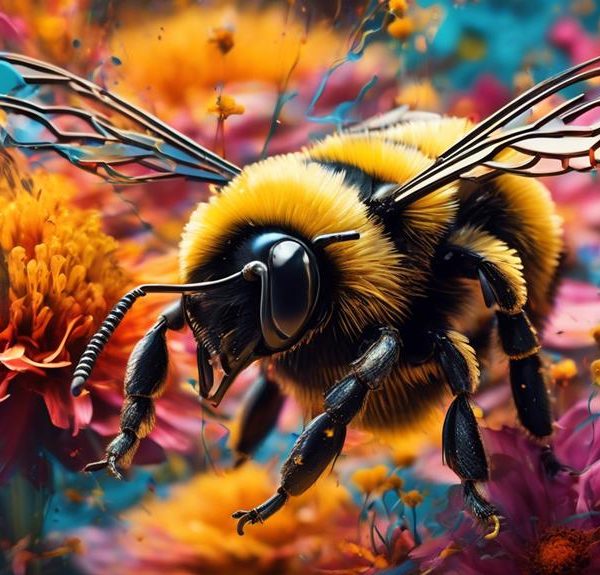Harness the mystery of why soapy water proves fatal to bees, as we delve deep into the captivating science behind this fascinating phenomenon.
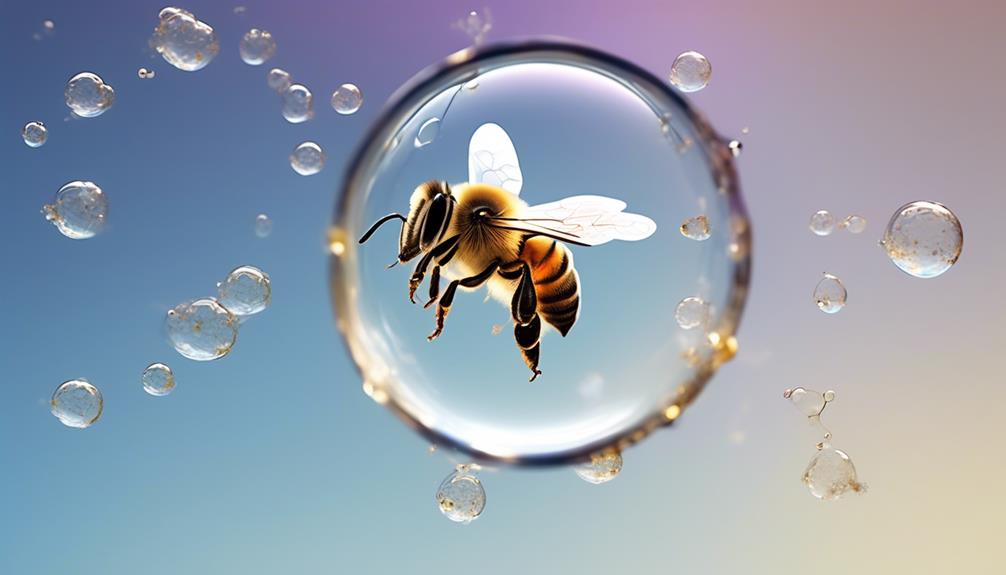
Why Does Soapy Water Kill Bees?
In the days of the Pony Express, messages were delivered swiftly and efficiently, much like how bees pollinate our world today.
You've probably heard that soapy water can kill bees, but have you ever wondered why? It's not as simple as you might think.
You see, the interaction between bees and soapy water involves a complex series of physiological and chemical events that lead to the unfortunate demise of these essential pollinators.
As we go further on, we'll explore the science behind why soapy water has such a lethal effect on bees, leaving you to ponder on this intriguing phenomenon.
Key Takeaways
- Soapy water disrupts bees' ability to breathe by clogging their spiracles and suffocating them.
- The hydrophilic and hydrophobic properties of soap molecules in soapy water can cause dehydration and death in bees.
- Soapy water reduces water's surface tension, leading to drowning in bees.
- The chemically basic nature of soap can cause burns to bees' exoskeletons, resulting in dehydration and potential infections.
Understanding Bee Physiology
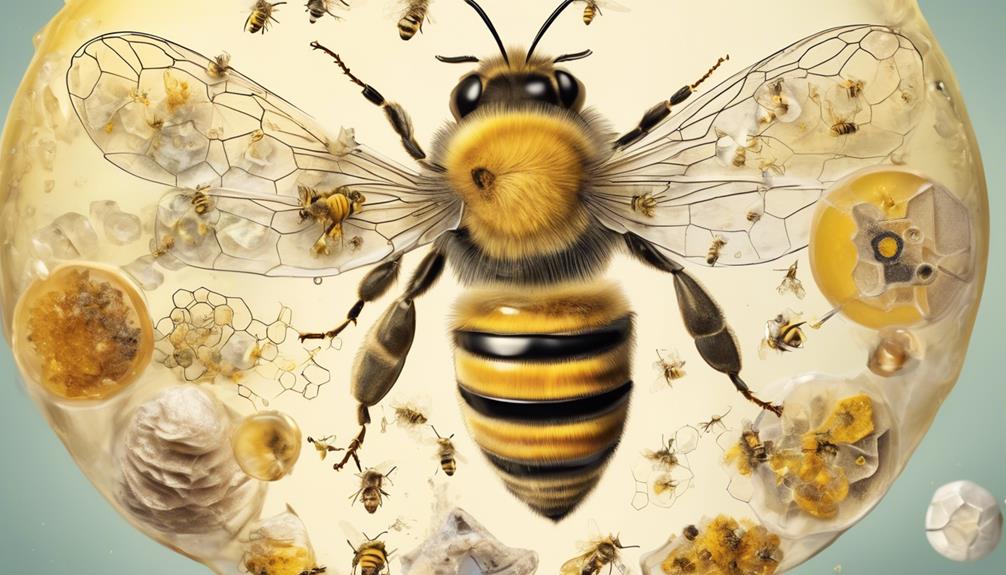
To fully grasp why soapy water is lethal to bees, you'll frequently need to delve into the intricacies of bee physiology. Bees, like other insects, breathe through a complex network of tubes called tracheae. These tubes deliver oxygen directly to the bee's tissues. Unlike mammals, who expel carbon dioxide through the lungs, bees release it through spiracles, tiny openings located on the sides of the abdomen and thorax.
When you spray a bee with soapy water, the soap molecules disrupt the surface tension of the water droplets. This causes the water to spread out and penetrate the spiracles more efficiently. As a result, the soapy water essentially drowns the bee from the inside out, obstructing its airways and preventing oxygen from reaching vital tissues.
Moreover, the soap can also damage the bee's exoskeleton, a critical protective barrier against environmental hazards and pathogens. In short, soapy water inflicts a double blow to bees: it suffocates them and weakens their defense system.
Understanding this physiological vulnerability allows us to appreciate the lethal effects of soapy water on these vital pollinators.
Properties of Soapy Water
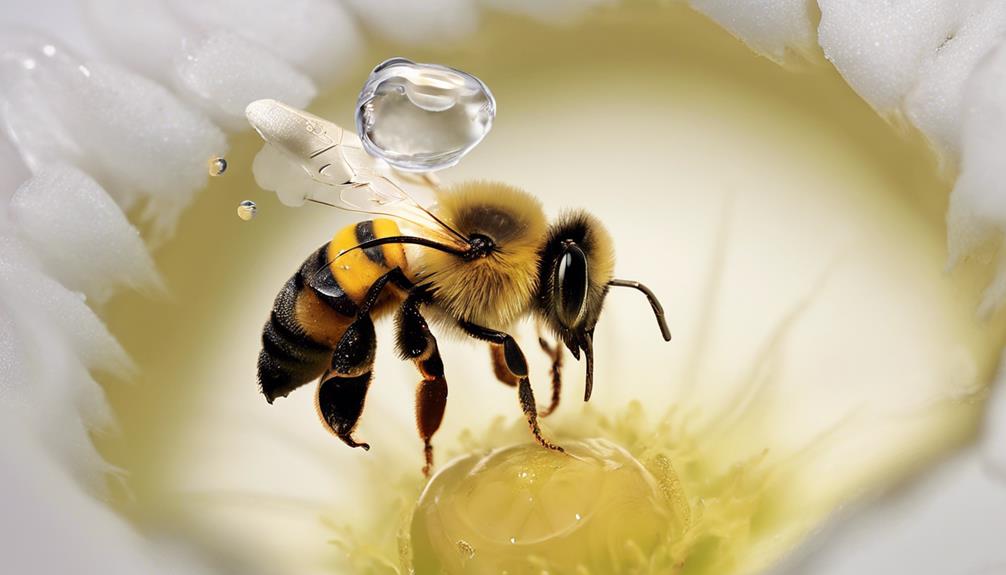
Now, let's delve into the peculiarities of soapy water, a seemingly mundane substance that holds potent lethality for bees due to its unique properties.
At the most basic level, soapy water is a mixture of soap molecules and water. The soap molecules, being amphipathic in nature, have a hydrophilic (water-attracting) head and a hydrophobic (water-repelling) tail. This allows them to interact with both water and greasy substances, making soap an effective cleaning agent.
But what's this got to do with bees? Well, bees' exoskeletons are composed of a thin layer of wax, a lipid-based substance, which makes them hydrophobic. When a bee comes into contact with soapy water, the soap molecules disrupt this waxy layer, essentially causing the bee to dehydrate and die.
Moreover, the soap lowers the surface tension of the water. This means the water isn't as 'sticky' and can more easily penetrate the bee's respiratory system, leading to drowning.
The Impact of Soapy Water on Bees
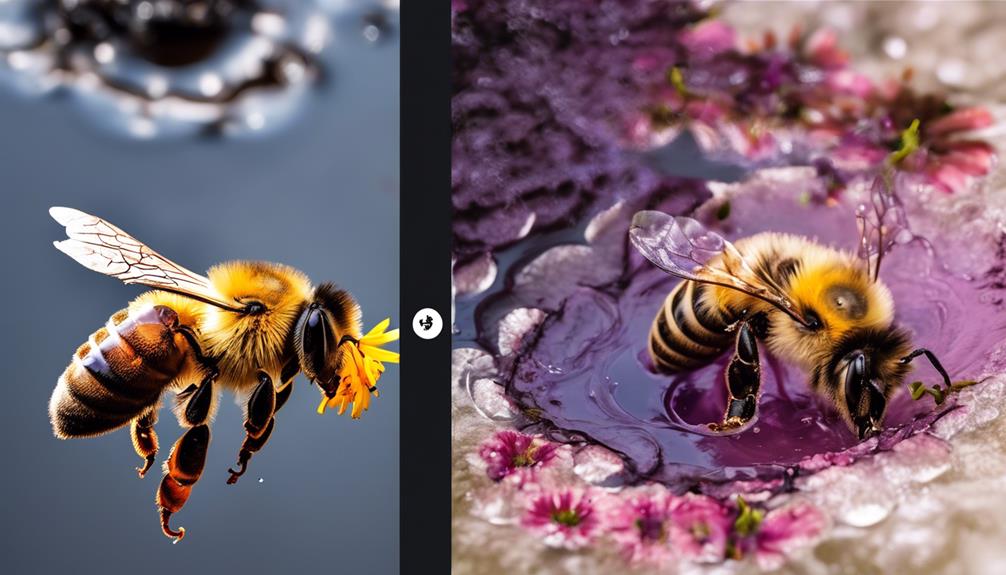
Understanding the lethal effect of soapy water on bees, let's examine the broader impact this can have on bee populations and the environment as a whole.
When you spray soapy water on bees, it's not just the individual bee that suffers. On a larger scale, it can lead to a significant decrease in bee populations. This happens because soapy water, while harmless to humans, is fatal to bees. It breaks down their exoskeleton, causing them to dehydrate and die.
This mass extermination can cause a ripple effect in the ecosystem. Bees are key pollinators and play a vital role in sustaining many of our plant species. Without them, there's a risk of these plants not being able to reproduce, leading to declining biodiversity.
Moreover, bees contribute to the food chain, both as pollinators and as a food source for other creatures. If bees disappear, organisms that rely on them could also struggle to survive.
Scientific Explanations Behind Bee Deaths
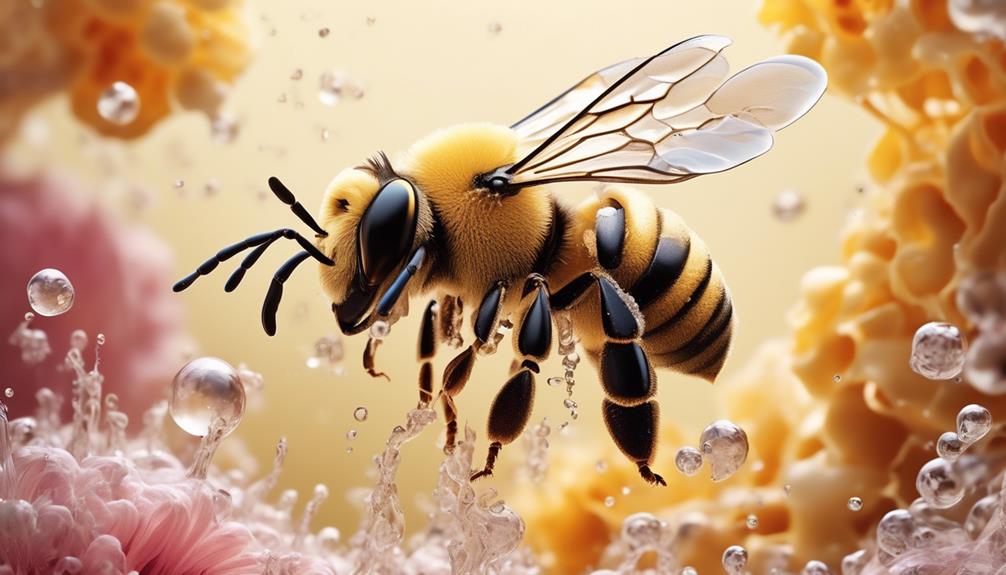
Let's delve into the scientific mechanics behind how soapy water proves fatal to bees, causing drastic repercussions in their populations.
Soapy water, a seemingly innocuous substance, becomes a death sentence for bees due to its chemical properties. As you may know, the soap reduces water's surface tension, causing bees, which typically float, to sink and drown.
Additionally, soap disrupts the delicate respiratory system of bees. They breathe through spiracles, tiny tubes along their bodies. When these tubes get clogged with soapy water, the bees suffocate.
Furthermore, soap is chemically basic and can cause fatal burns to the bees' exoskeletons, leading to dehydrations and infections.
Possible Prevention and Solutions
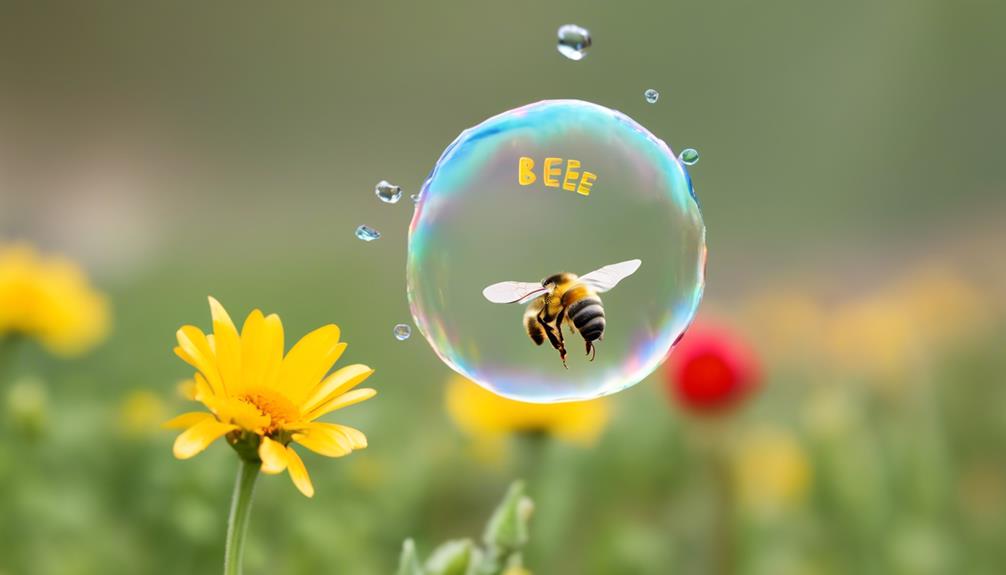
Given the lethal impact of soapy water on bees, it's imperative we explore potential preventative measures and solutions to mitigate this ecological issue. You might ask, 'What can we do?' Well, the answer lies in our day-to-day practices.
First, consider using bee-friendly soaps and detergents. Many commercial products contain harmful substances that, when mixed with water, become deadly for the bees. Opt for biodegradable, non-toxic soaps that are less harmful to the environment.
Second, control the use of soapy water around plants, especially flowering ones that attract bees. If you must use soapy water for cleaning or pest control, do it in the evening when bees are less active.
Third, create a bee-friendly garden. Planting a variety of flowers that bloom at different times of the year provides a steady supply of nectar and pollen for bees. Avoid using pesticides, as these can harm bees and other beneficial insects.
Lastly, educate others about the importance of bees to our ecosystem and the risks posed by soapy water. Remember, each of us plays a crucial role in ensuring the survival of these essential pollinators.
Frequently Asked Questions
Are There Other Common Household Substances That Could Be Harmful to Bees?
Yes, there are other common household substances harmful to bees. Pesticides, particularly those containing neonicotinoids, are highly toxic. Even small amounts can disorient bees, leading to death.
Certain cleaning products also pose a risk, especially those with strong fragrances that may attract bees. It's crucial to use these substances responsibly, ensuring they don't contaminate flowers or other food sources for bees.
How Quickly Does Soapy Water Affect a Bee's Ability to Fly or Move?
When you expose a bee to soapy water, it impacts their mobility almost immediately. The soap breaks down their exoskeleton's waxy layer, causing dehydration and inhibiting flight. They'll struggle to move and ultimately die from this exposure.
It's a quick, albeit cruel, process. So, it's essential to consider less harmful ways to deal with bees, as they play a vital role in our ecosystem.
Are Certain Types of Bees More Affected by Soapy Water Than Others?
You're asking if some bees are more affected by soapy water than others. It's hard to say definitively without more targeted research.
However, it's likely that smaller species suffer more due to their size. The soap clogs their spiracles faster, impacting their ability to breathe.
Larger bees might resist longer, but ultimately, they'd also succumb if exposed long enough.
It's crucial to remember that all bees play an essential role in our ecosystem.
What Are the Environmental Implications of Bees Dying From Soapy Water?
When bees die from soapy water, it disrupts the balance of our ecosystem.
You see, bees are key pollinators, enabling plant reproduction. Without them, we'd face drastic decreases in crop yields, affecting global food supplies.
Moreover, less plant life impacts wildlife that relies on plants for food and shelter. So, the death of bees can trigger a domino effect, impacting biodiversity and potentially leading to the extinction of various species.
Are There Any Legal Repercussions for Intentionally Killing Bees With Soapy Water?
Yes, there could be legal repercussions for intentionally killing bees with soapy water. Laws vary by location, but many places protect pollinators like bees due to their importance in our ecosystems. If you're caught deliberately harming bees, you may face fines or other penalties.
It's crucial to respect these creatures and seek humane, legal ways to manage them if they're causing problems. Always check local regulations before taking action.
Conclusion
In summary, soapy water kills bees due to their specific physiology and the properties of soap. It clogs their spiracles, inhibiting their ability to breathe, leading to suffocation.
The scientific explanation shows a clear impact, highlighting the danger of using soapy water carelessly. We must strive for prevention and find solutions that protect our crucial pollinators.
After all, our ecosystem's balance depends on the survival and thriving of these small yet significant creatures.


